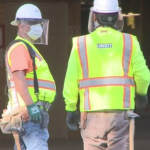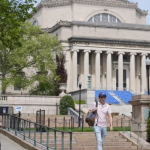
Arizona’s recent Supreme Court ruling restoring the 1864 law forbidding nearly all premature births marks a critical turning point in the state’s regenerative rights scene
Arizona’s recent Supreme Court ruling restoring the 1864 law forbidding nearly all premature births marks a critical turning point in the state’s regenerative rights scene. This decision, made against the backdrop of Roe v. Wade reversal and a conservative-majority court, has far-reaching suggestions for fetus removal to and lawful point of reference.
Reestablishment of 1864 Law
The Arizona Supreme Court’s decision to revive the 1864 law, which originates before statehood and women’s suffrage, has reignited talks about over-regenerative rights. The law, at first passed amid the Civil War time, forced rigid limitations on fetus removal, criminalizing the strategy but in cases where the woman’s life was at risk. In spite of past legitimate challenges and remains, the court’s conservative-leaning majority’s share has maintained the law, successfully restoring it and severely limiting premature birth in the state.
Lawful Scene Post Roe v. Swim Inversion
The ruling comes within the wake of the U.S. Supreme Court’s point of interest choice to topple Roe v. Wade, the 1973 case that legalized abortion across the country. With the government securities of Roe presently dispensed with, states have been allowed more prominent independence to sanction their claim to abortion laws. Arizona’s restoration of the 1864 law embodies this move, reflecting a broader drift of preservationist states moving to limit abortion rights in the nonappearance of government oversight.
Political and Legitimate Backfire
Democratic Attorney General Kris Mayes has condemned the Arizona Supreme Court’s decision, labeling it as “unconscionable” and confirming her refusal to uphold the law. Mayes’ position adjusts with broader democratic opposition to prohibit abortion measures, emphasizing the significance of ensuring women’s regenerative opportunity. In any case, the ruling has confronted staunch back from anti-abortion advocates, counting neighborhood prosecutors who have interceded in support of the 1864 law’s requirement.
Proceeded Promotion and Resistance
In spite of the court’s decision, advocacy groups and abortion rights activists stay enduring in their endeavors to stand up to the prohibitive measures. Planned Parenthood, a driving supplier of regenerative healthcare, has announced plans to proceed offering abortion services under earlier court orders. Moreover, endeavors are underway to challenge the ruling through voter choices and administrative activity, underscoring the continuous battle to protect and extend women’s regenerative rights in Arizona and the past.
Affect on Women’s Wellbeing and Rights
The restoration of the 1864 law postures noteworthy challenges to women’s wellbeing and independence. By extremely constraining fetus removal, especially in cases where a woman’s wellbeing is at risk, the law threatens to imperil the lives and vocations of endless individuals. Moreover, the disintegration of regenerative rights excessively impacts marginalized communities, compounding existing aberrations in healthcare and results.
National and Worldwide Consequences
Arizona’s choice to resuscitate the 1864 law reflects broader patterns in abortion approach both broadly and all inclusive. With the resurgence of prohibitive measures in various states, women’s access to regenerative healthcare is progressively beneath risk. Besides, Arizona‘s ruling may serve as a point of reference for other states looking to sanction abortion limitations, possibly setting the organization for advance challenges to women’s rights over the nation.
The Arizona Supreme Court’s decision to restore the 1864 law prohibiting nearly all abortions speaks to a significant setback for regenerative rights within the state. Against the background of Roe v. Wade and a conservative-majority court, the ruling underscores the progressing fight over abortion and independence. As advocates proceed to stand up to and mobilize against these prohibitive measures, the battle for regenerative equity remains a squeezing and fundamental need.







